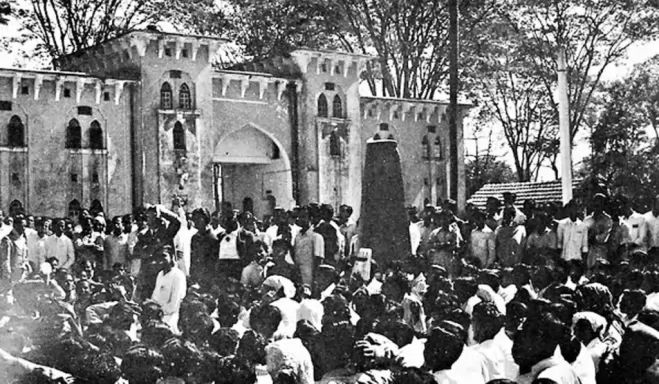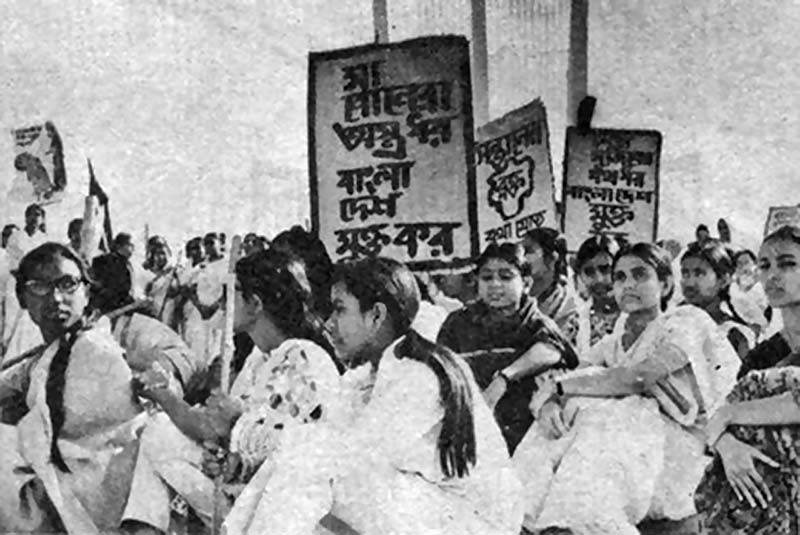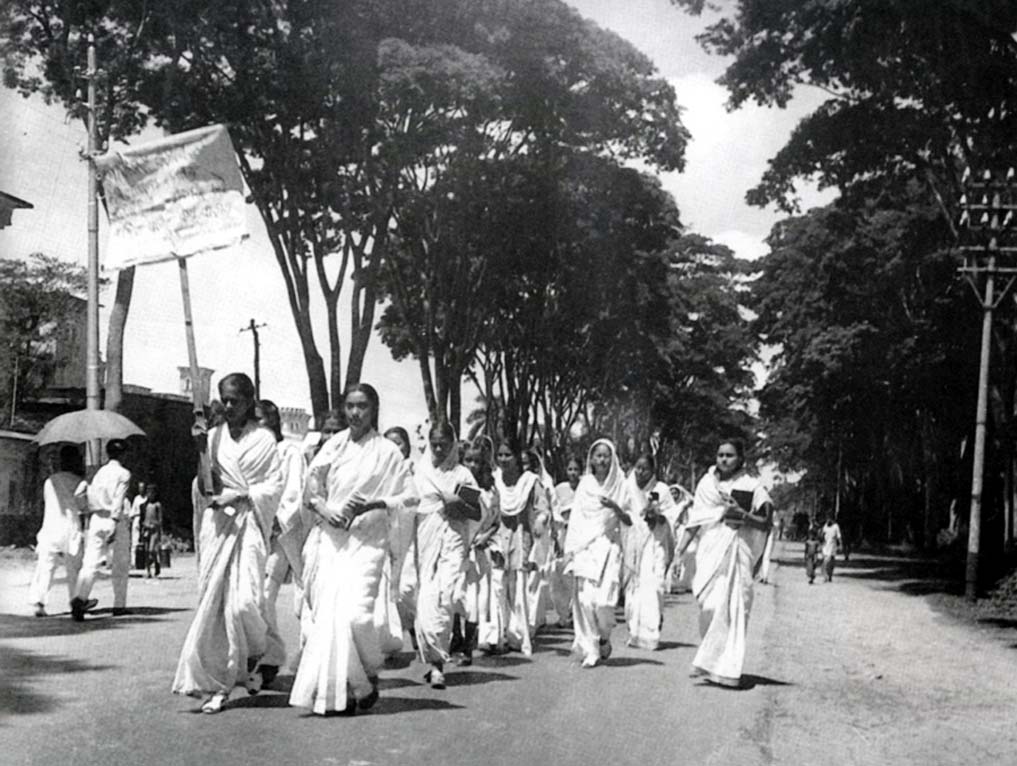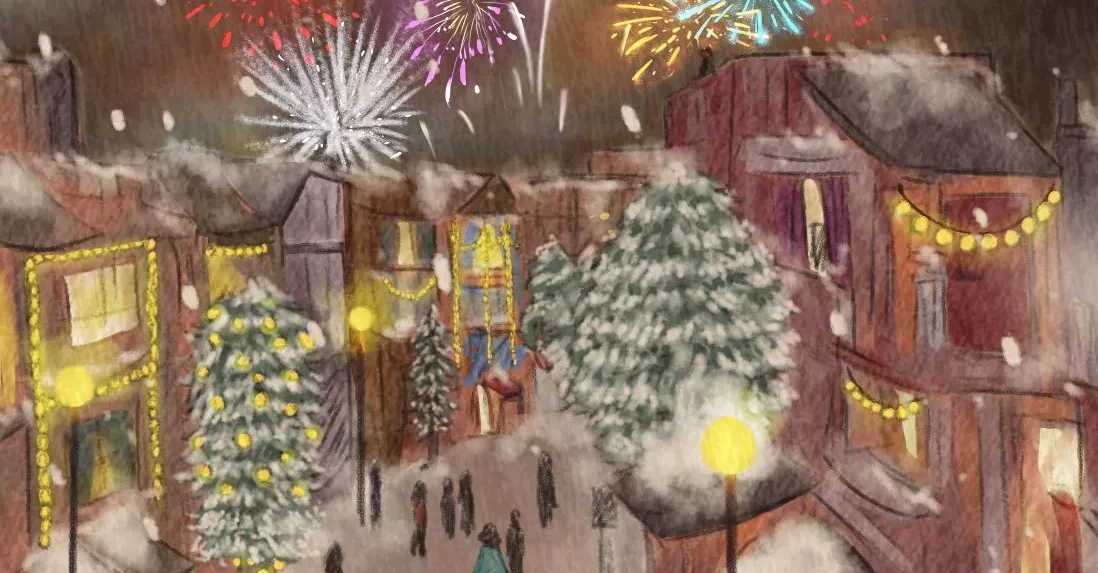21st Through Their Eyes: Two of History’s Forgotten Heroines

21st February 1952. Amtala, the legendary spot behind the emergency gate of Dhaka Medical College, jampacked with students from different schools, colleges, universities of Dhaka. Young, driven by rage, courage, and spirit of patriotism, these students were not held back by age, gender or the section 144 ordained by the Pakistan Government. Divided into groups of processions, the students fearlessly marched towards the police barricades on the other end, prepared to break the section 144.


The premise of the most crucial chapter in our language’s history has been recounted numerous times- on TV, in books and articles, by parents and grandparents- and is therefore known by every Bengali. However, a fact that these recounts sometimes miss out is that the frontliners of the processions – the first ones to face up to the armed police and get past the barricades – were young female students.
Late Dr Halima Khatun and Rowshon Ara Bacchu were two of the valiant female protestors who remained in the front and were the first to break the barricades held for them. During a time when as much as speaking to a male classmate without a supervisor’s permission could result in a fine or even suspension from the university dorm, what was it like for them to fight for their language alongside their male peers on the frontline? Let’s revisit the bloodstained 21st February from the POV of the two great women who played notable roles in the Bengali Language Movement.
From days before 21st February, the students of Dhaka University were preparing for the forthcoming countrywide strike on 21st February convoked by the All-Party Central Language Action Committee to protest against the declaration of Urdu being the state language of Pakistan and requiring to write Bangle in Arabic. A student at Dhaka University during the ongoing movement, Halima Khatun was involved in student politics and actively participated in the strikes, campaigns, and political meetings held at the university campus. She was in charge of holding campaigns at girls’ schools in Dhaka, especially at Banglabazar, Kamrunnesa, and Muslim Girls School, to get the students to participate in the protests. While the younger girls were easy to convince, many female students at university weren’t on board with setting up demonstrations against the government.
Fast forward to the night of 20th February. At a meeting held by the Dhaka University Sangram Parishad, it was decided that the curfew imposed by the government on 21st February, prohibiting the strikes and processions that were supposed to be held- would be breached, and the students would hit the streets anyway. The same night, when the students at her dormitory showed disinclination to violate the section 144, Halima went over to the leftist leader and language movement activist Nadera Bengum’s house in Hatirpul and collected a letter sanctioned by her. In the letter, Nadira Begum made an appeal to the girls of Women Students’ Residence (Dr Khatun’s hostel) to be present at the meeting at Amtala the next day. Nadira Begum had to forgo the meeting and the protests of 21st February as she had an arrest warrant sent out in her name.
Thanks to the letter and Halima Khatun’s spirited role in convincing the girls, a handful of students from the university’s female hostel and around 30-40 schoolgirls from Banglabazar, Kamrunnesa, and Muslim Girls’ School turned up at Amtala for the meeting on 21st February.
Another female student of Dhaka University, Rowshon Ara Bachchu, who had also participated in several campaigns related to the language movement, left her university hall on the morning of 21st and set off to gather more female students from other institutions in the city at the Amtala meeting. When the late language movement veteran recounted her memories of the day to a newspaper interview, she mentioned that, when she arrived at Amtala with the school and college girls, all she could see there were heads of people- the crowd was that big, and grew bigger as time passed.


The meeting started at 11 am, and it was announced that, upon the decision of the All-Party State Language Action Committee, the section 144 would not be violated. While a few students supported the decision, some were very disappointed. Dr Halima Khatun recalled that the female students, especially the young schoolgirls, were wholly opposed to the idea of retreating.
The coordinator of the Sangram Parishad, Abdul Matin, opposed the decision as well and insisted that if they stepped back, the government would use this fear of section 144 to prevent all their future movements. He asked the crowd, “Should we back off because we are afraid of violating section 144?” An emphatic “No” came in response from the students.
As the final decision was to break the section 144, processions were divided into groups of 10 students in every group. It was also decided that a female student would be at the front of each group. We decided to bring out processions in groups, with ten students in each group to lower the chances of arrest.
With one group of police stationed on the opposite side of the university gate and another group with a barricade set up with sticks only 10ft apart, Rowshon Ara Bachchu, Dr Halima Khatun, along with other female students Shafia Khatun and Sufia Ibrahim, marched at the frontline of their respective groups, being the first students to come face to face with the police. As they marched, they shouted their slogans: “Rashtra bhasha Bangla chai; cholo cholo assembly cholo.”


Some of the students were arrested by the police, while some managed to successfully go past the stick barricade. Halima Khatun and some other students passed under the barricade; Shafia Khatun jumped over it, while Rowshon Ara Bachchu relentlessly kept trying to break it. She was adamant about demolishing the police barricade, and when others joined her and helped her push against it, the police began firing tear gas. But the protestors didn’t give up, and the students forced their way through when the sticks finally fell apart.
The police continued to fire tear shells at the students and started beating them up. Rowshon Ara Bachchu, who had never even seen tear shells before that day, was also a victim of the police baton charge.
But no amount of tear gas or beating could silence the protestors. They kept chanting their slogans at the top of their lungs.
The clash between the police and the protestors took a turn for the worse. Halima Khatun and some of her companions took shelter inside the Dhaka Medical College building; one of their co-protestors, Shafia Khatun, had been arrested while Rowshon Ara was injured. At around 3:00 pm, the police started shooting at the protestors on the streets.
Gunshots could be heard from the hospital, and the injured protesters were brought to the hospital’s emergency department on stretchers. While recalling the horrifying details of the day, Halima said, “I can still hear the wails of the wounded patients who were being brought in.”
To avoid the beatings and gunfires, Rowshon Ara Bachchu sought refuge behind a pile of rickshaw remains across from the medical college building. As the gunshots didn’t stop for a long time, Rowshon realized that staying on the streets was too risky. So she went inside the house of Salimullah Hall’s provost, where she found few other female protestors. All of them were so frightened and flustered that they couldn’t muster up the courage to go back to their hall. But luckily, they found Professor Munier Chowdhury, who then helped them return to the hall.
When the firing had stopped, the students taking shelter inside the Medical College building came out. On their way back to their hostel, Dr Halima Khatun and her fellow protestors saw the streets were painted in blood, blood-spattered clothes lying on them. Not a single dead body was in sight, but the deluge of blood was enough to indicate that there had been a loss of lives. They also heard about someone being shot in the head.
Following these appalling events, Dr Khatun raised money for the medical treatment of protestors who had been injured that day.
Professor Dr Halima Khatun was awarded the Bangla Academy Literary Award in the year 1981 and the Ekushey Padak in 2019, a year after she passed away at age 86.
Rowshon Ara Begum breathed her last on 3rd December 2019 and had received the Top Ten Ananya Awards in 2009.
Major contributors to the language movement, frontliners at the protest of the unforgettable 21st February of 1952, both of these women had been saddened by how little history spoke about the participation of women in the creation of an Independent Bangladesh. Stories of female activists who ardently took part in protests, strikes, and rallies during times when women had been already shackled by society’s customs and norms- deserve to be bold lettered on the chapters of our nation’s history, not ignored and lost.














